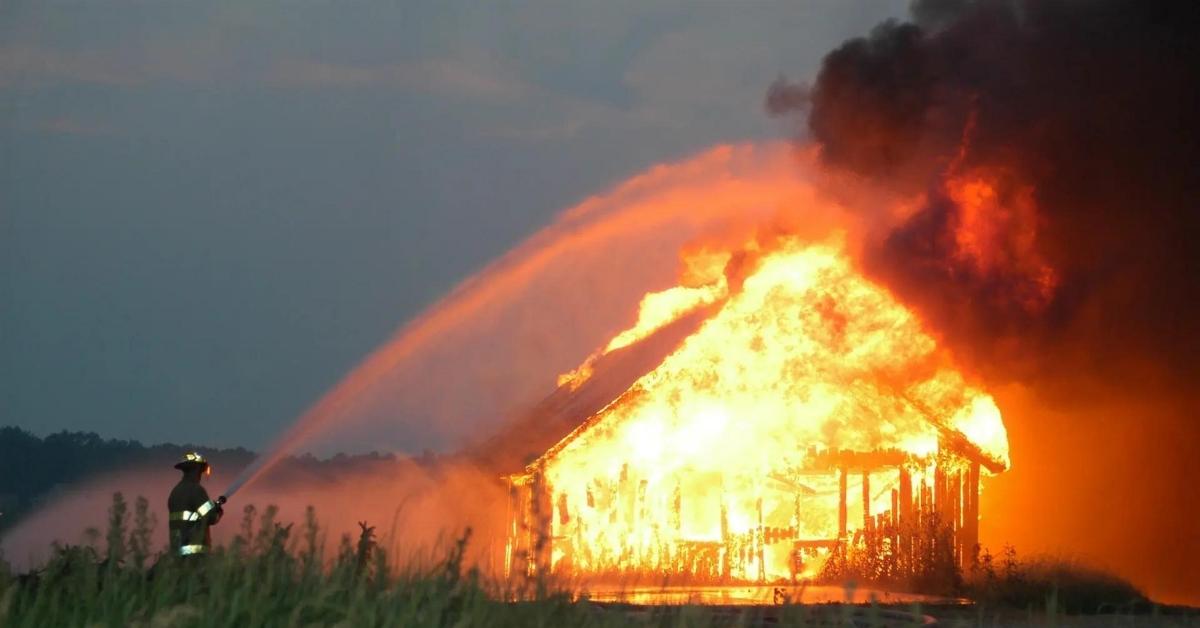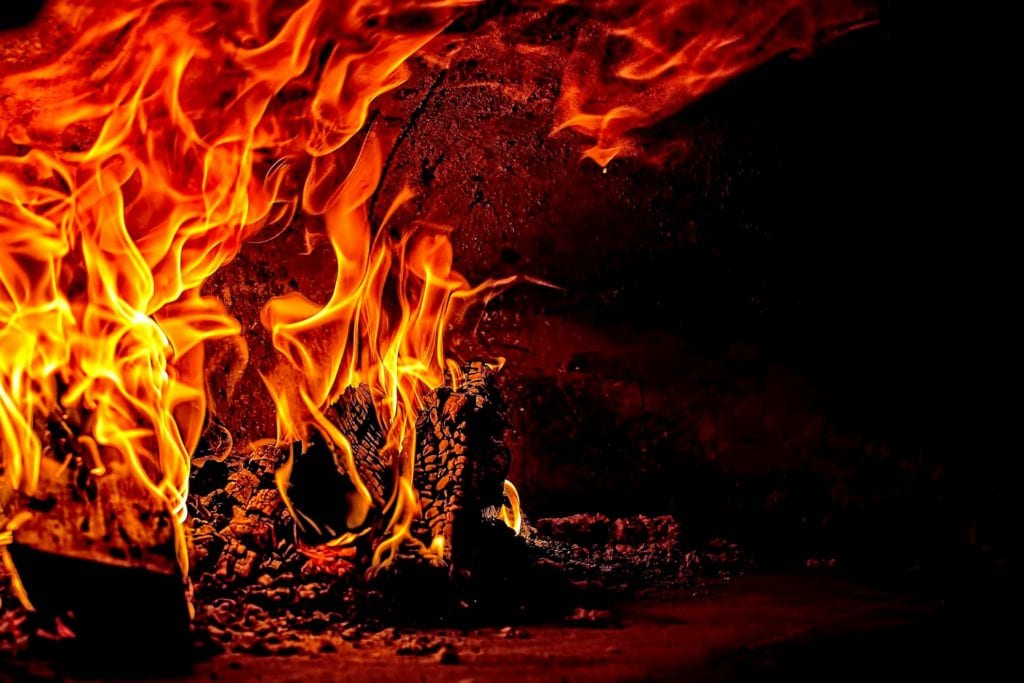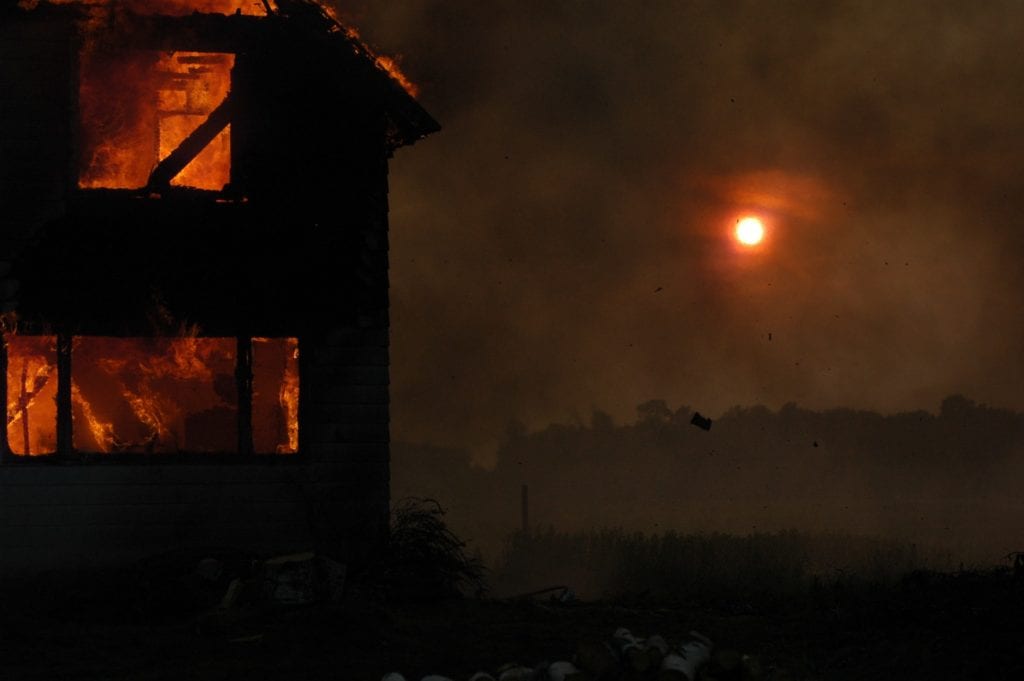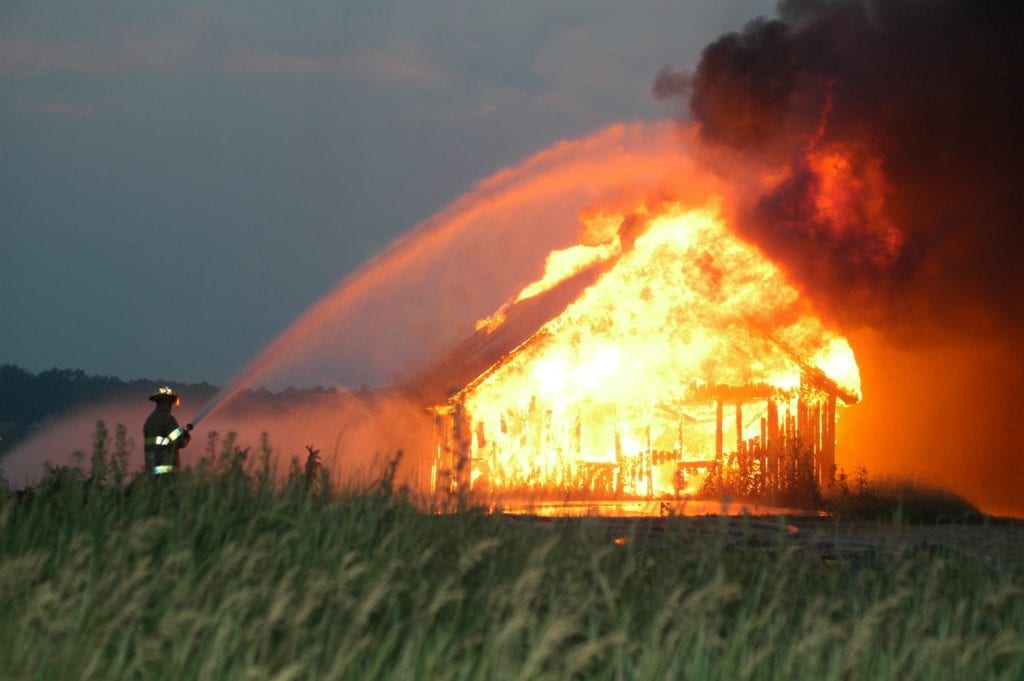Wood Burning and Fire Prevention Via Constructed Timber
By Simon Smith
Except for the Australian Kauri tree—whose wood does not really burn and, as such, is used for London Underground sleepers—wood burns.
But imagine this: if wood burns, then it is predictable. At the point of flashover (when the exposed areas near a fire reach temperatures of autoignition and emit flammable gases), fire uses oxygen to burn at an increasing rate, self-perpetuates the burn and chars at a predictable rate, usually over 1200 degrees Celsius. Wood density can play an important part in slowing the burning in the initial start of the fire’s life; however, some timbers contain extractive properties such as Turpentine and resins which can help fuel the fire’s intensity.
How Timber Structures Can Help Prevent Fires and Limit Fire Damage
A 4.20m steel RSJ beam in a fire situation will expand approximately 100mm at flashover. Meanwhile, a timber beam in a like-for-like size and situation will expand only about 5mm. This makes constructional timber beams unlikely to push the walls out or buckle.
However, if we know timber burns in a predictable way, then that charring rate can be identified and measured. Generally, timber chars at 0.02 of an inch per minute. Once the char has been formed on the burning wood, it can actually form a layer of insulation, preventing oxygen from getting to the unburnt timber, thereby slowing the burn rate. Safety engineers can exploit this in-built system by building in bigger section sizes, allowing the timber to char for a given length of time to allow the structure to remain safe and allow for people to evacuate. Firefighters, in fact, tend to prefer wooden structures over steel to get the structure under control and eventually extinguish the fire.
Of course, today there are various types of chemical treatments to help fire prevention. Both surface painting and vacuum pressure impregnation offer fire retardant benefits and can be used in internal and external applications. However, not all timber is capable of taking pressure impregnation.
Fire Prevention Throughout History
When did the general public become interested in protecting buildings as well as people? In truth, ever since wood became a building’s foundational structure. Even cathedrals, the great stone monoliths of the middle ages, were fire magnets with their huge roofs and internal structures constructed entirely out of timber. This was a conscious and widespread practice because timber weighed less than stone, but in days where cathedrals were very much the centre of town life—often marketplaces and charity sites as well as places of worship—this made them prone to burning.
However, it was the 1666 Pudding Lane disaster that grew and blazed into the Great Fire of London that shook the government of Charles II enough to act. Samuel Pepys wrote of its ferocity, starting in a bakery on 2nd September 1966 and smouldering until 6th September, ravaging around 75% of the city’s buildings, 87 churches, over 70,000 homes and a loss of possibly over 80,000 inhabitants. The miles of narrow streets of wooden structures, daub walls and thatch roofs destroyed by the fire had largely been inhabited by the poor. These contrasted starkly with the grander, stone-built merchant houses, which stood more of a chance of survival.
Worried about the aftermath and possible subsequent rebellion, Charles made a proclamation forbidding jetty housing (when a section of a building juts out over the street, supported by beams from the main building), which was largely ignored. In 1665, builders were then made liable for imprisonment should they try to get more houses in on smaller plots as the city expanded at an increasing rate. Again, this royal degree was ignored.
Not until 1705 did Parliament pass legislation that prevented cooking on open fires in thatched houses. Insurance companies developed from this and even had their own firefighters, who would respond to fires if the affected building had their company’s badge placed above the front door. If a watchman raised a fire alarm, but the building did not feature a plaque, the fire crews would not fight the blaze but instead stand back and watch it burn.
Fire Prevention in the Modern Day
Many other acts followed to protect property and persons. In 1937, all factories had to have fire escapes, but the most important to affect our trade was published in 1970: the famous British Standard BS476-4 , which since it was initiated has had 16 reviews and extensions but remains key to the present day. This piece of legislation made compulsory all of today’s well-known fire prevention measures, such as smoke detectors, smoke alarms, fire doors and words of warning around wood-burning stoves.
To this day, the fire and rescue service still serves as a huge knowledge source for prevention and fire safety. Their accumulated knowledge is second to none, although sadly gone are the days when news of a fire officer coming to inspect your works brought shivers down one’s spine, because it meant an official eagerness to ensure all was fit and correct. Self-assessment and self-certification, following government cutbacks, is a concerning move and debatably wrong from an expertise perspective.
BS476-4 has many parts. Sections 22 (The Spread of Flame) and 31.1 (Smoke and Prevention) are two of the most fundamental parts to this British Standard. There is a direct European link to BS476-4, resulting from European influence in furthering the protection of property and people. The desired implication is that the same measures and protocol will be strictly adhered to if a fire occurs, in public areas in particular.
The tragic fire at Grenfell Tower in June 2017, where 72 souls sadly lost their lives despite building regulations and inspections, is still being investigated. Dame Judith Hackett’s report is still to come out, but what is important from the next change in legislation will concern all the consequential losses resulting from the party to blame. Once blame can be established, the tragedy will have far deeper implications than before, preventing the passing of responsibility to the client and indeed the service companies who look after the buildings.
Final Thoughts on Timber and Fire Prevention
In summary, if timber burns then it is predictable. Knowing this, designs can be made to be safer and standards further improved to reduce the loss of life and property.
W. L. West & Sons Ltd is a timber merchant and sawmill business with 150 years of experience. We provide a wide range of air-dried oak and kiln-dried oak timber products and supplies. We also build and install custom projects for our customers.
For more news, tips and updates, follow us on Facebook, Twitter, or Instagram.
For entirely finished products, timber supplies or woodworking tools, have a look at our Retail Shop (which is temporarily closed for lockdown but will re-open in due course).
Liked this article? More like this:
The Best Uses and Properties of Oak Wood
9 Things You Need to Know About Beech Wood






